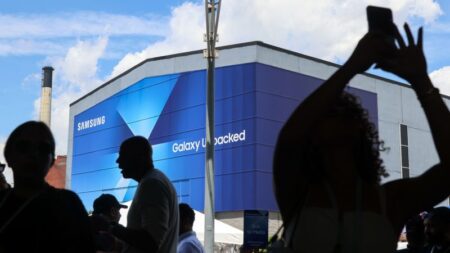In today’s corporate landscape, employees contemplating criticism of their employers on social media often face a complex and precarious predicament. While some laws exist to protect workers’ rights to speak out, navigating these protections can be challenging. A recent incident involving the dismissal of a Tesla manager for critical remarks about CEO Elon Musk highlights just how precarious this situation is. As reported by The New York Times, the manager’s firing raises important questions about the boundaries of employee speech in the digital age.
Jeffrey Hirsch, a professor of labor and employment law at the University of North Carolina, emphasizes the general scope of employee termination rights when he states, “In general, an employer could fire an employee for just about anything, including criticizing the company on social media or anywhere else.” This sentiment reflects a broader trend wherein employers enjoy considerable latitude to dismiss employees as they see fit, thereby placing employees in a quandary when it comes to voicing grievances publicly.
Despite these challenges, it is crucial for employees to be aware of the legal protections available to them. Engaging with a company’s social media policy and understanding the terms of one’s employment are important steps for those who may perceive themselves as vulnerable to retaliation. Critically, the legal standards surrounding employment at-will contracts, which allow either the employee or employer to terminate employment for virtually any reason, can offer some degree of context for assessing risk. Exceptions do exist, notably within anti-discrimination laws and contractual stipulations concerning termination criteria.
The concept of employment at-will holds true across the majority of states in the U.S., with Montana being the notable exception where firing an employee requires just cause. Moreover, the National Labor Relations Act (NLRA) plays a significant role in safeguarding employees’ rights. Under this law, workers are permitted to engage in “concerted activity,” which includes discussing workplace conditions with colleagues. According to Catherine Fisk, a professor of employment law at the University of California, Berkeley, if an employee can demonstrate that their speech pertains to communication with colleagues or is intended to advocate for their interests, it is likely to be protected.
The threshold for claiming protection under the NLRA is relatively low; even actions as simple as “liking” a colleague’s post can qualify for protection under the law, according to Hirsch. However, discussions about workplace issues must relate specifically to policies impacting multiple employees. Mark Kluger, an attorney who advises companies on labor policies, cautions that general complaints like “my boss is a jerk” are typically not protected under these legal standards.
Public sector employees, including those working for government agencies at the federal, state, and local levels, are additionally afforded protection under the First Amendment for speech made off duty that addresses a matter of public concern without causing undue disruption. This protection has been notably successful for numerous public employees, such as teachers and police officers, who faced disciplinary actions due to their social media posts.
While employers can reasonably expect their employees to refrain from spreading false claims about the company, they cannot categorically forbid criticism of the workplace. Kluger highlights how overly broad social media policies that prohibit critical remarks might be seen as impeding an employee’s rights to voice concerns regarding employment practices.
However, when discussing disparagement of company products or services, employers do have more authority. Kluger advises that companies should clearly delineate how employees’ personal social media activity can potentially harm a brand’s reputation, while also encouraging thoughtful engagement with the repercussions of their words. Policies often recommend that employees refrain from disparaging competitors or divulging trade secrets.
Importantly, employees who suspect retaliation for engaging in protected activity have the right to file a complaint with the National Labor Relations Board (NLRB). Despite many workers being unaware of this protective mechanism, Hirsch notes that even non-unionized employees can avail themselves of such protections if they diligently pursue them.
The NLRB investigates claims and may facilitate resolution or adjudicate disputes at no cost to employees. Although the investigation process can be lengthy, favorable outcomes can result in returning to work with backpay. The dynamics of the NLRB have recently fluctuated, particularly following political shifts; however, Hirsch reassures that clear cases of wrongful retaliation should remain insulated from these changes.
Kluger observes that concerns regarding employee social media use tend to peak during periods of heightened political or social discourse, signaling an ongoing need for businesses to manage the implications of employees’ public expressions. As the landscape continues to evolve, the relationship between employee expression, corporate interests, and legal protections remains a critical area for ongoing dialogue.
In conclusion, while the boundaries of employee speech on social media remain intricate, vigilance, understanding legal frameworks, and open communication can empower employees to engage robustly while navigating the potential risks associated with public criticism of their employers.











